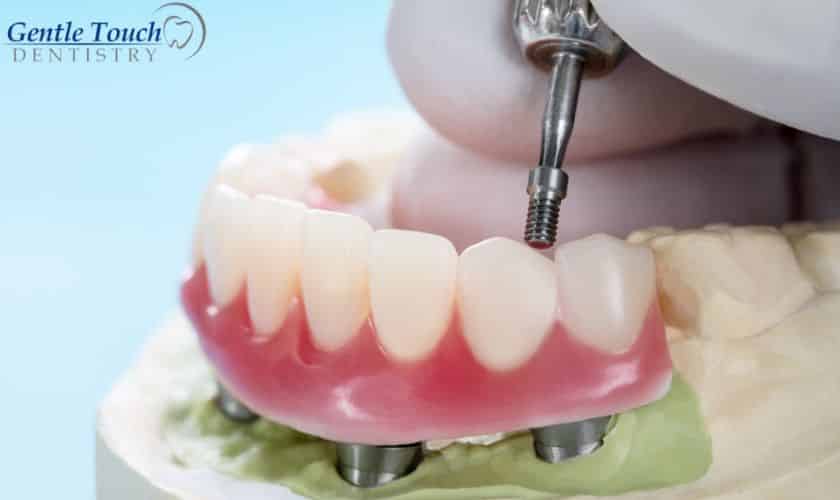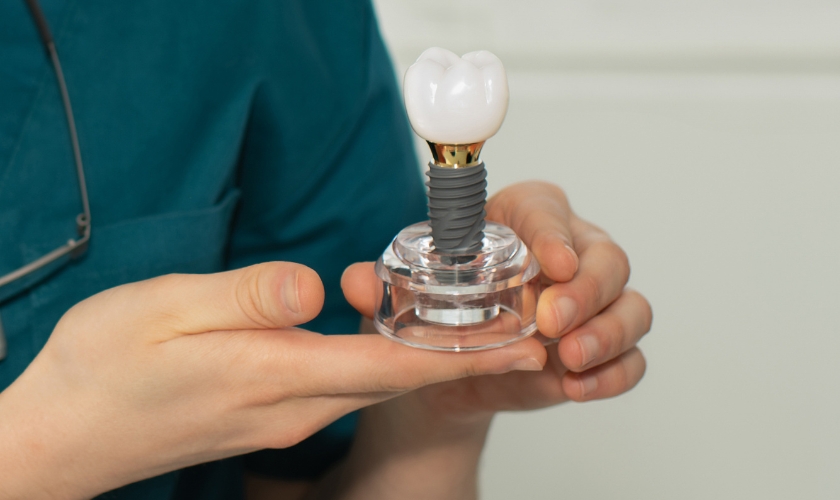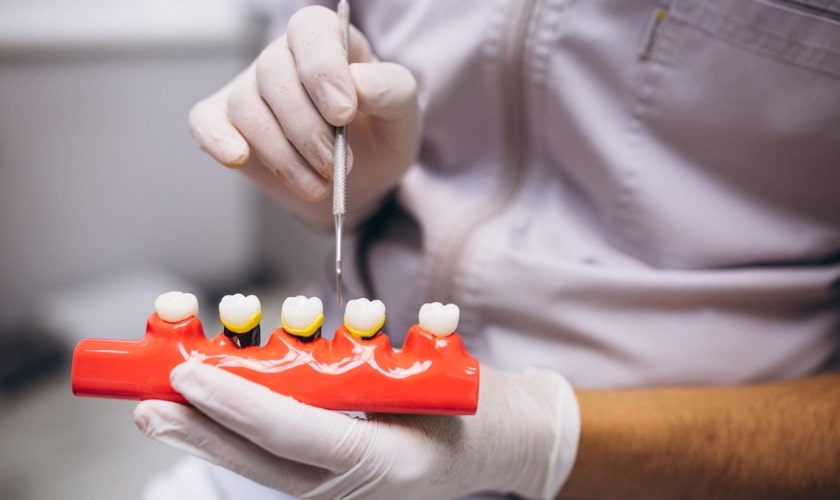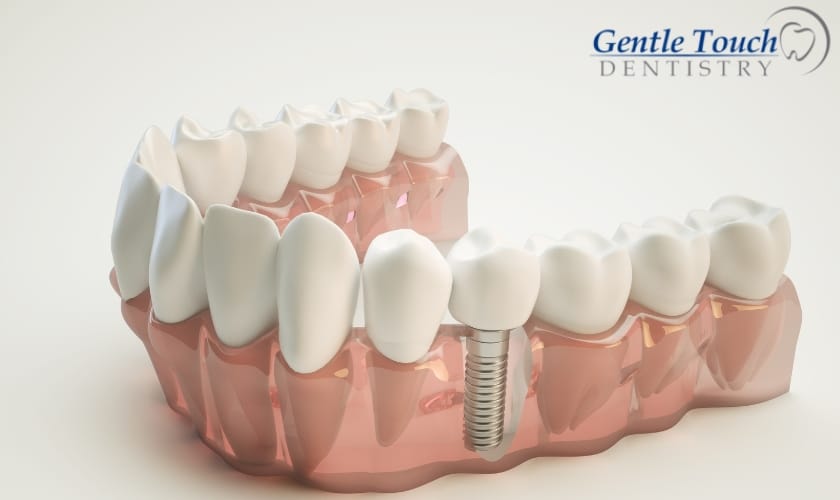
By Gentle Touch Dentistry Richardson
Dental implants have become the gold standard for replacing missing teeth, offering a durable, natural-looking solution. However, like any surgical procedure, dental implant placement involves a recovery process that requires care and patience. If you’re considering dental implants or have recently undergone the procedure, it’s essential to understand what to expect during the recovery period. This comprehensive guide will explore the facts about the dental implant recovery process, including timelines, tips, and key considerations.
The Dental Implant Recovery Timeline
Immediate Post-Op: The initial hours after dental implant surgery are crucial. You may experience bleeding, swelling, and discomfort at the surgical site. Your dentist or oral surgeon will provide specific post-operative instructions, including guidelines for managing pain and swelling.
First Few Days: Swelling and discomfort are common during the first few days after surgery. You might need pain medication as prescribed by your dentist. Swelling can be minimized with ice packs applied intermittently to the cheek.
Diet Restrictions: For the first few days, you’ll likely need to follow a soft or liquid diet to avoid putting pressure on the implant site. This allows for proper healing and reduces the risk of complications.
Stitches Removal: If your procedure requires stitches, they are usually removed within a week or two, depending on the type of stitches used. Dissolvable stitches will naturally disappear.
Bone Integration: The dental implant gradually bonds with the jawbone through osseointegration. This can take several months, so avoid putting excessive force on the implant.
Temporary Restoration: A temporary crown or prosthesis is sometimes placed on the implant while it heals. This allows you to maintain functionality and aesthetics during the osseointegration phase.
Final Restoration: Once osseointegration is complete, your dentist will attach the final restoration, such as a crown, bridge, or denture, to the implant. This restoration is custom-made to match your natural teeth in appearance and function.
Key Recovery Considerations
Oral Hygiene: Maintaining proper oral hygiene is critical during recovery. Your dentist will provide instructions on how to clean the surgical site without disturbing the healing process.
Smoking and Tobacco Use: Smoking can hinder healing and increase the risk of implant failure. Quitting smoking during recovery is advisable to ensure the best possible outcome.
Follow-Up Appointments: Regular follow-up appointments with your dentist or oral surgeon are essential to monitor your progress and address any concerns promptly.
Diet and Nutrition: Eating a balanced, nutrient-rich diet can support healing. Consider foods high in vitamins C and D, which promote gum and bone health.
Physical Activity: While rest is crucial during the immediate post-op period, light physical activity can help improve blood circulation and aid healing.
Avoiding Certain Foods: Steer clear of hard, crunchy, and sticky foods during the initial healing phase to prevent damage to the surgical site.
Patience and Care: Understand that the dental implant recovery process takes time. Be patient and diligent in following your dentist’s instructions to ensure the best possible outcome.
The dental implant recovery process is critical in your journey to regaining a beautiful and functional smile. Understanding the timeline, adhering to post-operative care instructions, and maintaining good oral hygiene are key factors in ensuring the success of your dental implant. By being informed and proactive, you can look forward to enjoying the long-lasting benefits of a restored smile and improved oral health. Remember, your dentist is your partner in this journey, and regular communication and follow-up appointments are essential for a smooth and successful recovery.






